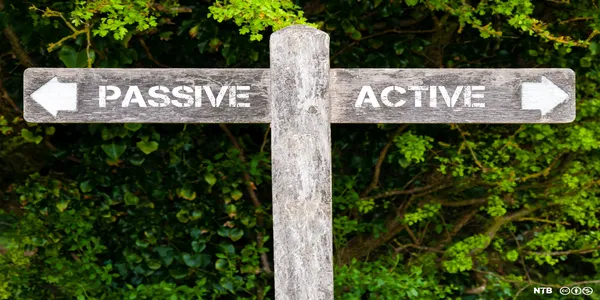Active and Passive Voice Exercises: Mastering the concept of active and passive voice is essential for effective communication in English. By understanding the nuances of active and passive voice, you can convey information with clarity and precision. In this article, we will explore various exercises to help you practice and improve your command over active and passive voice constructions.
Active and Passive Voice Exercises 1:
Identifying Active and Passive Voice
Directions: In each sentence, determine whether the sentence is in active or passive voice.
- The dog chased the ball. (Active)
- The ball was chased by the dog. (Passive)
- Sarah painted a beautiful picture. (Active)
- A beautiful picture was painted by Sarah. (Passive)
Active and Passive Voice Exercises Explanation: Active voice sentences focus on the subject acting, while passive voice sentences highlight the object receiving the action. By identifying the subject and the verb in each sentence, you can determine whether it is in active or passive voice.
Active and Passive Voice Exercise 2:
Converting Active Voice to Passive Voice
Directions: Rewrite the following sentences in passive voice.
- The students will submit their assignments tomorrow. (The assignments will be submitted by the students tomorrow.)
- The teacher is explaining the lesson to the students. (The lesson is being explained to the students by the teacher.)
Explanation: Converting active voice sentences to passive voice requires changing the sentence structure and identifying the object as the subject.
Active and Passive Voice Exercises 3:
Changing Passive Voice to Active Voice
Directions: Rewrite the following sentences in active voice.
- The letter will be delivered by the postman tomorrow. (The postman will deliver the letter tomorrow.)
- The novel was written by a famous author. (A famous author wrote the novel.)
- The cake was baked by my grandmother. (My grandmother baked the cake.)
Explanation: To convert passive voice sentences to active voice, identify the subject acting and rewrite the sentence accordingly.
Active and Passive Voice Exercises Exercise 4:
Fill in the Blanks
Directions: Fill in the blanks with the appropriate active or passive voice form of the verb in brackets.
- The flowers _______ (water) by the gardener every morning.
- The cake _______ (bake) by my sister for my birthday.
- The concert _______ (attend) by thousands of music lovers.
- The house _______ (paint) by a professional painter last week.
- The mistake _______ (correct) by the teacher before submitting the test.
Active and Passive Voice Exercises Explanation: This exercise helps reinforce the use of active and passive voice by requiring you to choose the correct form of the verb to complete the sentence.
Active and Passive Voice Exercises Conclusion: Practicing active and passive voice exercises is crucial for honing your grammar skills and enhancing written and spoken communication. By understanding when and how to use active and passive voice constructions, you can convey your ideas effectively and engage your audience. Keep practicing and applying these concepts to become more proficient in using active and passive voice in your everyday communication.
Remember to actively engage in exercises and continually apply the concepts learned to reinforce your understanding. With time and practice, you will gain confidence in using active and passive voice correctly.
Active and Passive Voice Exercises Faqs:
Active and passive voices are different ways of expressing actions in a sentence. In the active voice, the subject acts, while in the passive voice, the subject receives the action.
Practicing active and passive voice exercises helps improve your understanding of sentence structure and enhances your overall grammar skills. It also enables you to communicate more effectively in writing.
In active voice sentences, the subject is the doer of the action, and the verb directly follows the subject. In passive voice sentences, the subject is the receiver of the action, and the verb is accompanied by a helping verb, such as is, was, or has been.
The active voice makes sentences more direct, clear, and concise. It emphasizes the subject and highlights who or what is acting, making the sentence more engaging for the reader.
To convert an active voice sentence into a passive voice sentence, you need to change the position of the subject and the object and add a form of the verb to be before the main verb.
One common mistake is using the passive voice unnecessarily or excessively.
You can practice by rewriting sentences from active to passive voice and vice versa. Online grammar exercises and worksheets are also helpful resources.
Yes, there are several websites and educational platforms that offer interactive exercises and quizzes to practice active and passive voice.
English Grammar in Use by Raymond Murphy and Wren and Martin's High School English Grammar and Composition are popular resources that cover active and passive voice in detail.
Reading extensively and analyzing sentence structures in various texts can help improve your understanding of active and passive voice. Additionally, seeking guidance from a teacher or tutor can be beneficial.
While there are no specific shortcuts, becoming familiar with common sentence patterns and verb forms can help you identify active and passive voice more easily.
Pay attention to the subject of the sentence and ensure that it aligns with the action being performed. Use clear and precise language to avoid ambiguity.
While it is possible to use both active and passive voices in a sentence, it can make the sentence complex and less clear.
To determine if a sentence is in the active or passive voice, identify the subject performing the action (active voice) or receiving the action (passive voice).
Grammarly, Hemingway Editor, and ProWritingAid are popular online tools that can help you identify and improve active and passive voice usage in your writing.
Practice is key to improving your understanding and usage of active and passive voice. Consistently reviewing grammar rules, seeking feedback, and actively incorporating them into your writing can help you overcome difficulties.
Yes, the choice between active and passive voice can impact the tone of your writing. Active voice tends to sound more direct and engaging, while passive voice can create a more formal or objective tone.
In storytelling or narrative writing, the active voice is generally preferred as it creates a sense of immediacy and involvement for the reader. It helps bring the story to life.
Consider the context, purpose, and desired emphasis of your sentence. Choose the voice that best conveys your intended meaning and creates the desired impact on the reader.
Yes, the choice between active and passive voice can impact the clarity of your writing. Active voice is often clearer and more straightforward, while passive voice can sometimes introduce ambiguity.
Active voice is commonly used in persuasive writing as it creates a sense of directness and urgency, making the argument more compelling. It helps the writer establish a stronger connection with the audience.
Certainly! Here's an exercise: Rewrite the following active voice sentence into passive voice: The teacher taught the students. What are active and passive voices?
Why is it important to practice active and passive voice exercises?
How can I identify active and passive voice sentences?
What are the benefits of using the active voice?
How can I convert an active voice sentence into a passive voice sentence?
What are some common mistakes to avoid when using the passive voice?
How can I practice active and passive voice exercises?
Are there any online resources for active and passive voice exercises?
Can you recommend any books or study materials for active and passive voice exercises?
How can I improve my understanding of active and passive voice?
Are there any shortcuts or tricks to identify active and passive voice?
How can I avoid confusion between active and passive voice while writing?
Can I use both active and passive voices in the same sentence?
How can I determine if a sentence is in the active or passive voice?
Can you suggest some online tools to check active and passive voice usage in my writing?
How can I overcome difficulties in using active and passive voice?
Can active and passive voice affect the tone of my writing?
Is it better to use active or passive voice in storytelling or narrative writing?
How can I determine which voice to use in a specific sentence?
Can using active and passive voice affect the clarity of my writing?
What is the role of active and passive voice in persuasive writing?
Can you provide some active and passive voice exercises for beginners?
To learn more about Education Information






I learned new technique from this article.
Thanks to The Pen Post.